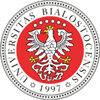Proszę używać tego identyfikatora do cytowań lub wstaw link do tej pozycji:
http://hdl.handle.net/11320/19048Pełny rekord metadanych
| Pole DC | Wartość | Język |
|---|---|---|
| dc.contributor.author | Radyszewski, Rostysław | - |
| dc.date.accessioned | 2025-10-15T09:34:27Z | - |
| dc.date.available | 2025-10-15T09:34:27Z | - |
| dc.date.issued | 2025 | - |
| dc.identifier.citation | Adam Mickiewicz i Ukraina. Studia, Redakcja naukowa tomu i wstęp Jarosław Ławski, Białystok 2025, s. 281-294 | pl |
| dc.identifier.isbn | 978-83-7657-542-1 | - |
| dc.identifier.uri | http://hdl.handle.net/11320/19048 | - |
| dc.description.abstract | The paper compares literary imagery and Crimean themes in the writings of Adam Mickiewicz (1798–1855), the most eminent poet of Polish Romanticism, and Lesya Ukrainka (born Larysa Kosacz, 1871–1913), the most prominent representative of Ukrainian modernism. In particular, it focuses on Mickiewicz’s “Crimean Sonnets” and Lesya Ukrainka’s “Crimean Memories”, which describe her impressions of a journey made in 1890 and 1891. The analysis uses the category of ‘displacement’, or change of place, proposed by the American researcher Stuart Curren in his article “Romanticism displaced and placeless”. For Polish and Ukrainian writers of the late nineteenth and early twentieth centuries, such displacement was a fairly typical practice, and the phenomenon had a significant impact on the character of their works. The article emphasises that the Ukrainian writer’s work is more or less reminiscent of Mickiewicz’s “Crimean Sonnets”. Many scholars – both Polish and Ukrainian – note that despite the thematic similarities to the poetry of Mickiewicz and Pushkin, who both visited Crimea, Lesya Ukrainka’s “Crimean Memories” stand out for their originality. The work testifies to the qualitative development of Ukrainka’s poetry both at the level of genre and stylistic features, as well as at the level of content and means of artistic expression. In Lesya’s work, the landscape is used to express precisely the thoughts and mental states of the lyrical subject (as is the case in Mickiewicz’s work). From the point of view of genre, these works can be classified as a sub-genre of lyrical meditations. | pl |
| dc.language.iso | pl | pl |
| dc.publisher | Wydawnictwo PRYMAT | pl |
| dc.relation.ispartofseries | Colloquia Orientalia Bialostocensia;45 | - |
| dc.subject | Adam Mickiewicz | pl |
| dc.subject | Lesya Ukrainka (Larysa Kosacz) | pl |
| dc.subject | journey to the Crimea | pl |
| dc.subject | poetic accounts of voyages | pl |
| dc.subject | lyric cycle | pl |
| dc.subject | landscape | pl |
| dc.title | Łesia Ukrainka i Adam Mickiewicz w przestrzeni Sonetów krymskich | pl |
| dc.title.alternative | Lesya Ukrainka and Adam Mickiewicz: in the sphere of the Crimean Sonnets | pl |
| dc.type | Book chapter | pl |
| dc.rights.holder | Copyright by Uniwersytet w Białymstoku, Białystok 2025 | pl |
| dc.rights.holder | Copyright by Wydawnictwo PRYMAT, Białystok 2025 | pl |
| dc.description.Biographicalnote | Rościsław Radyszewski – prof. dr hab., kierownik Katedry Polonistyki Kijowskiego Narodowego Uniwersytetu im. Tarasa Szewczenki, członek rzeczywisty Narodowej Akademii Nauk Ukrainy, członek zagraniczny Polskiej Akademii Umiejętności. Badacz pogranicza ukraińsko-polskiego w literaturze od XVII do XX wieku. W Kijowie wydaje i redaguje „Kijowskie Studia Polonistyczne” (do dziś XXXVIII tomów). Autor tomów: Poezja polskojęzyczna na Ukrainie w XVII wieku(Kraków 1996), Polskojęzyczna poezja ukraińska od końca XVI do początku XVIII wieku (Kraków 1996). Ostatnio wydał: Naris ìstorìï pol’s’koï lìteraturi: pìdručnik u dvoh knigah, Kn. 1–2 (Kijów 2019). Edytor poetów polskich: Leśmiana, Staffa, Iwaszkiewicza. Znawca i wydawca twórczości przedstawicieli ukraińskiej szkoły polskiego romantyzmu, takich jak: Antoni Malczewski, Seweryn Goszczyński, Józef Bohdan Zaleski, Tomasz Padurra, Włodzimierz Wysocki, Lew Węgliński. Mieszka w Kijowie. | pl |
| dc.description.Affiliation | Kijowski Narodowy Uniwersytet im. Tarasa Szewczenki, Ukraina | pl |
| dc.description.references | Jakóbiec M., Łesia Ukrainka i polska literatura romantyczna, „Slavia Orientalis” 1971, nr 4, s. 371–378. | pl |
| dc.description.references | Mickiewicz A., Dzieła, pod red. J. Krzyżanowskiego, Warszawa 1955, t. I–XVI. | pl |
| dc.description.references | Piotrowski W., Łesia Ukrainka i Adam Mickiewicz, „Pamiętnik Słowiański” 1956, t. VI, s. 89–97. | pl |
| dc.description.references | Sławiński J., Synchronia i diachronia w procesie historycznoliterackim, [w:] Problemy teorii literatury, Seria 2, Wrocław 1987, s. 284–299. | pl |
| dc.description.references | Бабишкін О., Леся Українка в Криму, Сімферополь: Кримвидав, 1955. | pl |
| dc.description.references | Неупокоєва И., Общие черты европейского романтизма и своеобразие его национальных путей, [w:] Европейский романтизм, Москва: Наука, 1973, с. 3–39. | pl |
| dc.description.references | Радишевський Р., Іскри єднання, Київ: Дніпро, 1983. | pl |
| dc.description.references | Спогади про Лесю Українку, Київ: Радянський письменник, 1971. | pl |
| dc.description.references | Українка Леся, Зібрання творів у дванадцяти томах, Київ: Наукова думка, 1977, т. 8. | pl |
| dc.description.references | Хитарашвили В. Н., „Фарис” Мицкевича и „Мерани” Бараташвили, [w:] Польський романтизм и восточнославянские литератури, Москва: Наука, 1973, с. 223–230. | pl |
| dc.description.firstpage | 281 | pl |
| dc.description.lastpage | 294 | pl |
| dc.identifier.citation2 | Adam Mickiewicz i Ukraina. Studia, Redakcja naukowa tomu i wstęp Jarosław Ławski | pl |
| dc.conference | Międzynarodowa Jubileuszowa Konferencja Naukowa „Adam Mickiewicz i Ukraina. Obraz kraju – obraz poety – recepcja – konteksty europejskie”, Białystok-Kijów, 22 września 2022 r. | pl |
| dc.identifier.orcid | 0000-0002-5279-8232 | - |
| Występuje w kolekcji(ach): | Międzynarodowa Jubileuszowa Konferencja Naukowa „Adam Mickiewicz i Ukraina. Obraz kraju – obraz poety – recepcja – konteksty europejskie”, 22 września 2022 r. | |
Pliki w tej pozycji:
| Plik | Opis | Rozmiar | Format | |
|---|---|---|---|---|
| R_Radyszewski_Lesia_Ukrainka_i_Adam_Mickiewicz.pdf | 143,54 kB | Adobe PDF | Otwórz |
Pozycja jest chroniona prawem autorskim (Copyright © Wszelkie prawa zastrzeżone)

